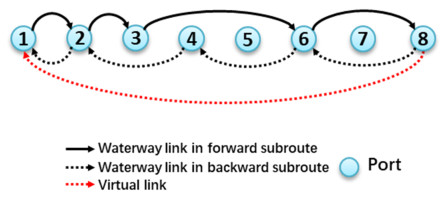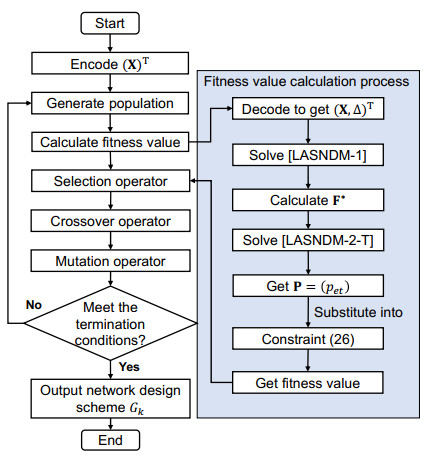1.
Introduction
Time-fractional differential equations arise in the mathematical modeling of a variety of real-world phenomena in many areas of sciences and engineering, such as elasticity, heat transfer, circuits systems, continuum mechanics, fluid mechanics, wave theory, etc. For more details, we refer the reader to [4,6,7,8,14,15,17,24] and the references therein. Consequently, the study of time-fractional differential equations attracted much attention of many researchers (see e.g. [1,5,9,10,19,22,23] and the references therein).
Multi-time differential equations arise, for example, in analyzing frequency and amplitude modulation in oscillators, see Narayan and Roychowdhury [18]. Some methods for solving Multi-time differential equations can be found in [20,21].
The study of blowing-up solutions to time-fractional differential equations was initiated by Kirane and his collaborators, see e.g. [3,11,12,13]. In particular, Kirane et al. [11] considered the two-times fractional differential equation
where p,m>1, 0<α,β<1, CDα0|t is the Caputo fractional derivative of order α with respect to the first time-variable t, and CDβ0|s is the Caputo fractional derivative of order β with respect to the second time-variable s. Namely, the authors provided sufficient conditions for which any solution to (1.1) blows-up in a finite time. In the same reference, the authors extended their study to the case of systems.
In this paper, we investigate the nonexistence of global solutions to two-times-fractional differential inequalities of the form
where p>1, m≥1, γ,σ∈R, a>0, 0<α,β<1, HCDαa|t is the Hadamard-Caputo fractional derivative of order α with respect to the first time-variable t, and CDβa|s is the Caputo fractional derivative of order β with respect to the second time-variable s. Using the test function method (see e.g. [16]) and a judicious choice of a test function, we establish sufficient conditions ensuring the nonexistence of global solutions to (1.2). Our obtained conditions depend on the parameters α,β,p,m,γ,σ, and the initial values.
Our motivation for considering problems of type (1.2) is to study the combination effect of the two fractional derivatives of different nature HCDαa|t and CDβa|s on the nonexistence of global solutions to (1.2). As far as we know, the study of nonexistence of global solutions for time fractional differential equations (or inequalities) involving both Hadamard-Caputo and Caputo fractional derivatives, was never considered in the literature.
The rest of the paper is organized as follows: In Section 2, we recall some concepts from fractional calculus and provide some useful lemmas. In Section 3, we state our main results and provide some examples. Section 4 is devoted to the proofs of our main results.
2.
Some preliminaries
Let a,T∈R be such that 0<a<T. The left-sided and right-sided Riemann-Liouville fractional integrals of order θ>0 of a function ϑ∈L1([a,T]), are defined respectively by (see [10])
and
for almost everywhere t∈[a,T], where Γ is the Gamma function.
Notice that, if ϑ∈C([a,T]), then Iθaϑ,IθTϑ∈C([a,T]) with
The Caputo fractional derivative of order θ∈(0,1) of a function ϑ∈AC([a,∞)), is defined by (see [10])
for almost everywhere t≥a.
Lemma 2.1. [see [10]]Let κ>0, p,q≥1, and 1p+1q≤1+κ (p≠1, q≠1, in the case 1p+1q=1+κ). Let ϑ∈Lp([a,T] and w∈Lq([a,T]). Then
The left-sided and right-sided Hadamard fractional integrals of order θ>0 of a function ϑ∈L1([a,T]), are defined respectively by (see [10])
and
for almost everywhere t∈[a,T].
Notice that, if ϑ∈C([a,T]), then Jθaϑ,JθTϑ∈C([a,T]) with
The Hadamard-Caputo fractional derivative of order θ∈(0,1) of a function ϑ∈AC([a,∞)), is defined by (see [2])
for almost everywhere t≥a, where
We have the following integration by parts rule.
Lemma 2.2. Let κ>0, p,q≥1, and 1p+1q≤1+κ (p≠1, q≠1, in the case 1p+1q=1+κ). If ϑ∘exp∈Lp([lna,lnT]) and w∘exp∈Lq([lna,lnT]), then
Proof. Using the change of variable x=lnτ, we obtain
that is,
Similarly, we have
By (2.3), we obtain
Using the change of variable x=lnt, we get
Since ϑ∘exp∈Lp([lna,lnT]) and w∘exp∈Lq([lna,lnT]), by Lemma 2.1, we deduce that
Using again the change of variable x=lnt, there holds
Then, by (2.4), the desired result follows.
By elementary calculations, we obtain the following properties.
Lemma 2.3. For sufficiently large λ, let
Let κ∈(0,1). Then
Lemma 2.4. For sufficiently large λ, let
Let κ∈(0,1). Then
3.
Main results
First, let us define global solutions to (1.2). To do this, we need to introduce the functional space
We say that u is a global solution to (1.2), if u∈Xa and u satisfies the fractional differential inequality
for almost everywhere t,s≥a, as well as the initial conditions
Now, we state our main results.
Theorem 3.1. Let u0∈L1([a,∞)), u1∈Lm([a,∞),1tdt), and u1≢0.Let
If
then, for all α∈(0,1), (1.2) admits no global solution.
Remark 3.1. Notice that by (3.1), the set of exponents p satisfying (3.2) is nonempty.
Theorem 3.2. Let u0∈L1([a,∞)), u1∈Lm([a,∞),1tdt), and u1≢0. Let
If
and
then (1.2) admits no global solution.
Remark 3.2. Notice that by (3.3), the set of real numbers γ satisfying (3.4) is nonempty.
We illustrate our obtained results by the following examples.
Example 3.1. Consider the fractional differential inequality
where a>0 and 0<α<1. Observe that (3.6) is a special case of (1.2) with
Moreover, we have
and u0∈L1([a,∞)), u1∈Lm([a,∞),1tdt). Hence, condition (3.1) is satisfied. Then, by Theorem 3.1, we deduce that, if
that is,
then (3.6) admits no global solution.
Example 3.2. Consider the fractional differential inequality
where a>0. Then (3.7) is a special case of (1.2) with
On the other hand, we have
which shows that condition (3.3) is satisfied. Moreover, we have
which shows that conditions (3.4) and (3.5) are satisfied. Then, by Theorem 3.2, we deduce that (3.7) admits no global solution.
4.
Proofs of the main results
In this section, C denotes a positive constant independent on T, whose value may change from line to line.
Proof of Theorem 3.1. Suppose that u∈Xa is a global solution to (1.2). For sufficiently large T and λ, let
where ϕ1 and ϕ2 are defined respectively by (2.5) and (2.8). Multiplying the inequality in (1.2) by 1tφ and integrating over ΩT:=(a,T)×(a,T), we obtain
On the other hand, using Lemma 2.2, integrating by parts, using the initial conditions, and taking in consideration (2.2), we obtain
Integrating over (a,T), we get
Similarly, using Lemma 2.1, integrating by parts, using the initial conditions, and taking in consideration (2.1), we obtain
Integrating over (a,T), there holds
It follows from (4.1)–(4.3) that
On the other hand, by Young's inequality, we have
Similarly, since p>m, we have
Hence, combining (4.4)–(4.6), we deduce that
where
and
By the definition of the function φ, we have
Thus, using (2.6), we obtain
Integrating over (a,T), we get
Similarly, by the definition of the function φ, we have
Thus, using (2.9), we obtain
Integrating over (a,T), we get
Combining (4.8) with (4.9), there holds
Since u0∈L1([a,∞)), u1∈Lm([a,∞),1tdt), and u1≢0, by the dominated convergence theorem, we deduce that for sufficiently large T,
Now, we shall estimate the terms Ki, i=1,2. By the definition of the function φ, the term K1 can be written as
Next, by (2.8), we obtain
On the other hand, by (3.1) and (3.2), it is clear that γ<p−1. Thus, we deduce that
By (2.5) and (2.7), we have
Notice that by (3.1) and (3.2), we have σ<p−1. Thus, we get
Hence, it follows from (4.11)–(4.13) that
Similarly, we can write the term K2 as
By (2.5), we have
Notice that by (3.2), we have σm<p−m. Thus, we get
On the other hand, by (2.8) and (2.10), we have
Notice that by (3.2), we have p>m(γ+1). Therefore, we obtain
Combining (4.16) with (4.17), there holds
Hence, it follows from (4.14) and (4.18) that
Thus, by (4.7), (4.10), and (4.19), we deduce that
Notice that by (3.1) and (3.2), we have
Hence, passing to the limit as T→∞ in (4.20), we obtain a contradiction with u1≢0. Consequently, (1.2) admits no global solution. The proof is completed.
Proof of Theorem 3.2. Suppose that u∈Xa is a global solution to (1.2). Notice that in the proof of Theorem 3.1, to obtain (4.20), we used that
On the other hand, by (3.3)–(3.5), it can be easily seen that the above conditions are satisfied. Thus, (4.20) holds. Hence, taking p=1+γβ in (4.20), we obtain
On the other hand, by (3.3)–(3.5), we have
Hence, passing to the limit as T→∞ in (4.21), we obtain a contradiction with u1≢0. This shows that (1.2) admits no global solution. The proof is completed.
5.
Conclusions
The two-times fractional differential inequality (1.2) is investigated. Namely, using the test function method and a judicious choice of a test function, sufficient conditions ensuring the nonexistence of global solutions to (1.2) are obtained. Two cases are discussed separately: 1<p<1+γβ (see Theorem 3.1) and p=1+γβ (see Theorem 3.2). In the first case, no assumption is imposed on the fractional order α∈(0,1) of the Hadamard-Caputo fractional derivative, while in the second case, it is supposed that α>1−1m. About the initial conditions, in both cases, it is assumed that u0∈L1([a,∞)), u1∈Lm([a,∞),1tdt), and u1≢0.
Finally, it would be interesting to extend this study to two-times fractional evolution equations. For instance, the tow-times fractional semi-linear heat equation
deserves to be studied.
Acknowledgments
The authors extend their appreciation to the Deanship of Scientific Research at Imam Mohammad Ibn Saud Islamic University for funding this work through Research Group no. RG-21-09-02.
Conflict of interest
The authors declare that they have no competing interests.

















 DownLoad:
DownLoad: